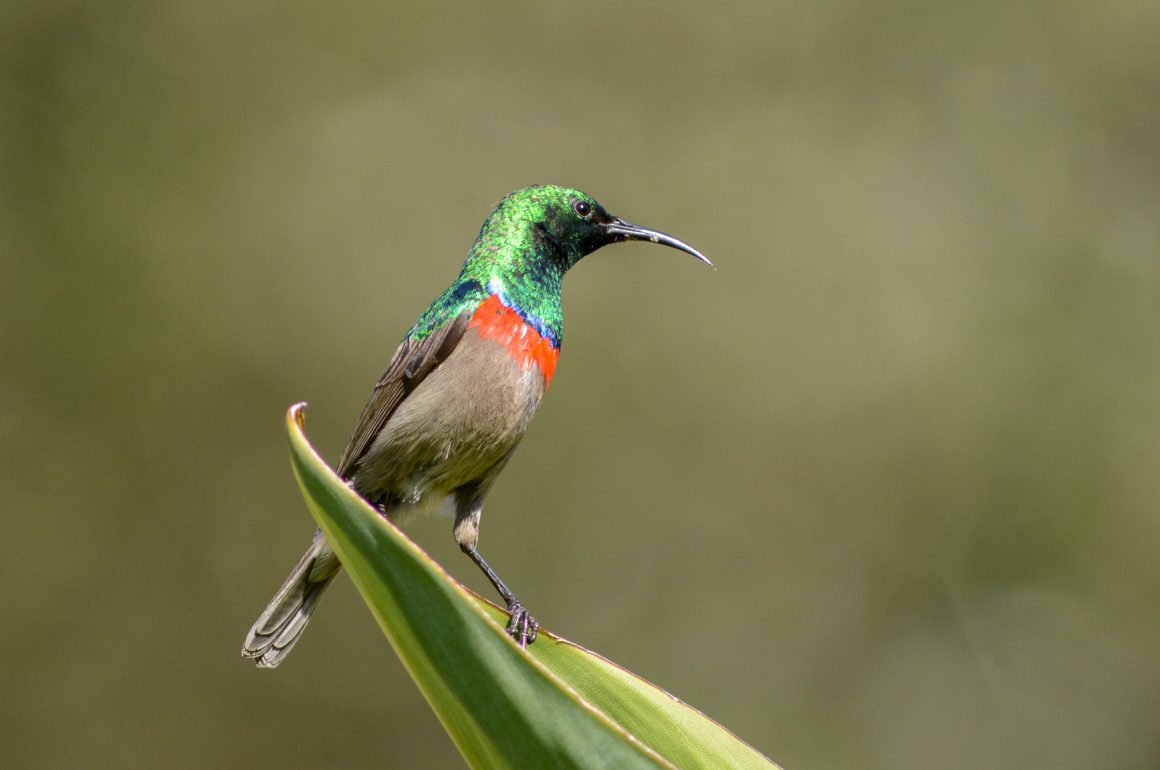
Because I lived in South Africa for most of my youth, I have seen a large portion of the huge variety of species in this amazing country. Of these, some have become particular favourites over the years, some of which I list here in no particular order – it was already hard enough to get down to ten species in the first place (my initial title was “10 favourite species”…). While many of these species are rather popular in the birding community in general, a major reason why I settled on the ones below is because I either had a special memory of my search for or sighting of them. Some of these, however, are species which I had wanted to see for ages without luck.
Pel’s Fishing Owl
This species had to be on the list because it was the first species I really wanted to see in my life and which I actively went out to see – and find – in Ndumo Game Reserve in South Africa. It is a really amazing bird, because (1) it’s an owl, (2) it’s a rare owl, (3) it’s a piscivorous rare owl, and (4) it’s a stunning-looking piscivorous rare owl. I had a sighting of an adult and a juvenile in the same morning, and we also heard the adult’s call earlier that morning. I only saw this species once subsequently, in Mkuze Game Reserve. It has a very restricted range in South Africa and although it occurs quite widely across sub-Saharan Africa, it is uncommon in most places.
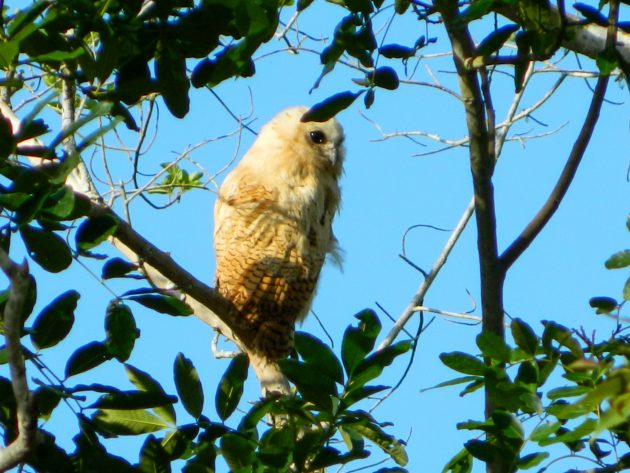
Narina Trogon
This bird, like so many other Trogonidae, is simply stunning. Similar to the Pel’s, it was a bird I had wanted to see rather early on in my life as a birder. It is generally a bird of riverine and lowland forest, where it has the habit of turning its bright red belly away from you so you are left with only its green back, making it all but invisible. I have since seen many other species such as the amazing Whitehead’s Trogon in Borneo, but the Narina Trogon is still one of my favourites. My first glimpses of this bird were in the same protected area where I first saw the Pel’s, but I’ve had far better views since in the Dlinza forest, a well-known birding spot in South Africa. Easily my best sighting was a male busily calling at eye level just meters away in Zimbabwe’s Zambezi River valley.
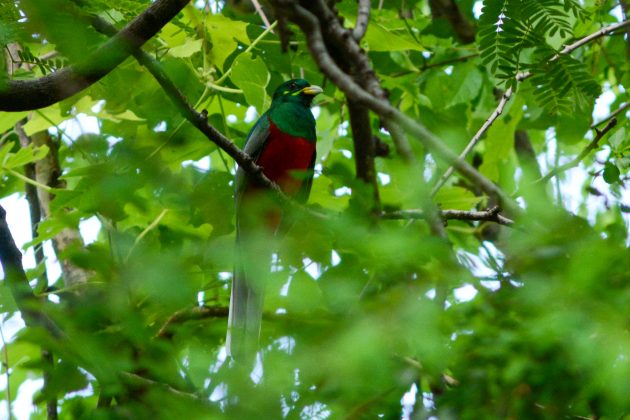
Black-throated Wattle-eye
I don’t recall when I came across this species in a book or photo for the first time, but I’m quite sure it’s in my old Robert’s Bird Guide, which I leafed through so many times that I knew the page on which each species was displayed by heart. I’m seeing a trend developing here that most species I note are ones that occur in South Africa’s eastern lowlands, and this bird is no exception. I first saw it just before we departed Amatikulu Nature Reserve on the coast of KwaZulu Natal, after a week of scouring the forests to find this little special. There’s quite a surprising diversity of wattle-eyes in Central and West Africa (I encourage you to check out Yellow-bellied and Black-necked Wattle-eyes on eBird for some adorable photos), none of which I have seen (desperately calling for a birding trip to these places).
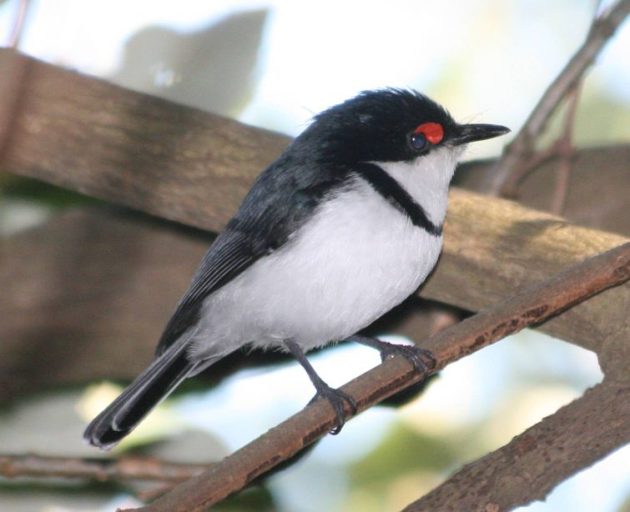
African Finfoot
To tell you the truth, I’ve never seen this bird. Or let’s rather say, I’ve never seen more than a splash of water as an orange foot disappeared into vegetation overhanging the water and our bird guide exclaiming “finfoot!”. This was actually in Ndumo Game Reserve, where I also saw the Pel’s Fishing Owl (and Narina Trogon), although on a different visit. I’ve been at many places where this species occurs, including some popular areas for this bird like Borakalalo Game Reserve and Enseleni Nature Reserve, but have never actually seen it. It is a very popular species amongst birders and is rare throughout its range, and I can’t wait for the moment when I suddenly see this ghost gliding over the water of some subtropical African river.
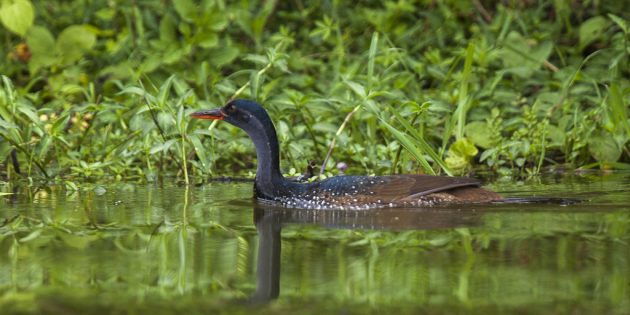
Temminck’s Courser
Coursers are among my favourite group of birds, along with the related pratincoles. The Temminck’s Courser is the most common species in South Africa and it’s also the first courser species I saw (although I saw my first Bronze-winged Courser the following day, for some reason!). The plumage of this species (just like the related but rare Burchell’s Courser which I’ve never seen), is amazingly smooth with beautiful gradual transitions in colour. I also love their very elegant posture, together with their preferred habitat of open plains, a habitat in South Africa that I enjoy birding in a lot due to the variety of other special arid-country species that are around.
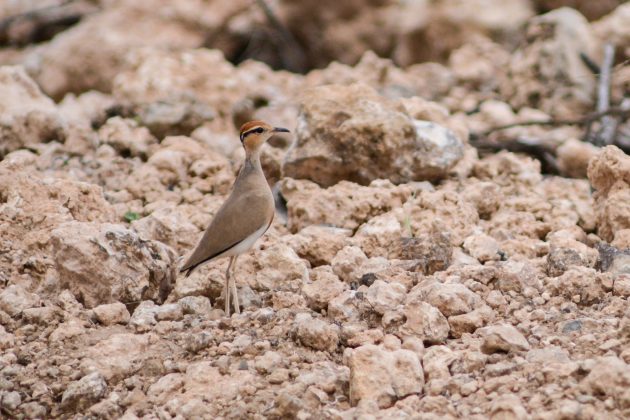
Red-chested Flufftail
This is another species I wanted to see for ages. Eventually, I saw a female very briefly in a small nature reserve close to my home, as it emerged into an opening in the reeds. I have yet to see a male, which has way more attractive plumage. Before I first saw this species, I read somewhere that another observer was shocked at how small this species was, expecting it to be around the size of a chicken when it was more like a thrush. I thought that this was rather silly but caught myself thinking the exact same thing when this tiny ball of feathers popped out between the reeds. Similar to crakes, their chicken-like shape (I don’t know if this is derogatory for the amazing birds that crakes are) is somehow misleading.
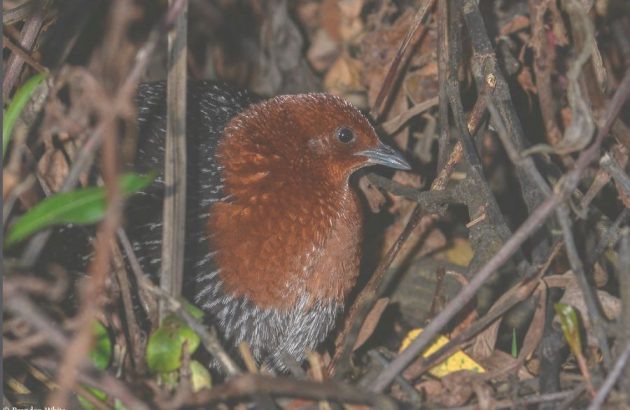
Lilac-breasted Roller
A classic species of the Kruger National Park, I had to include this bird because it was this species we nearly always stopped to look at during game drives, regardless of how common they are. Their bright colours really brighten up the bush, especially in the dry season. Moreover, because they are relatively tame, they are a very popular subject for photographers to get a shot of during flight, when their amazing flight feathers are exposed.
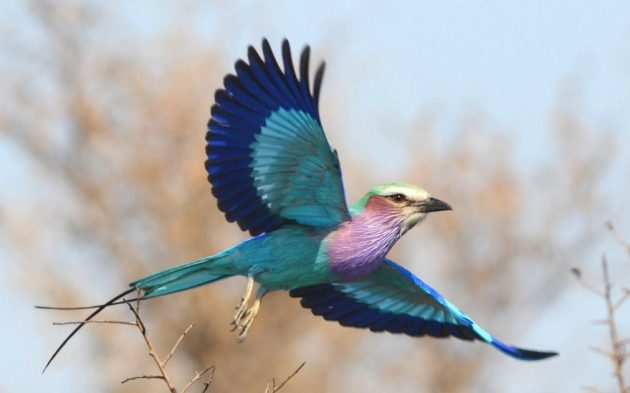
Green Woodhoopoe
I added this species because it was a regular garden bird where we lived in Pretoria, and attempted to breed in a palm tree in our garden. The species looks amazing but the family groups steal the show when the perch on a branch together and descend into a crazy cacaphony of gaggling sounds while swinging forwards and backwards on the branch. They’re one of these birds that really have an obvious character (like the Arrow-marked Babblers that also travel in family groups and chatter away all day), which makes them amazing to watch, especially when they’re outside your bedroom window!
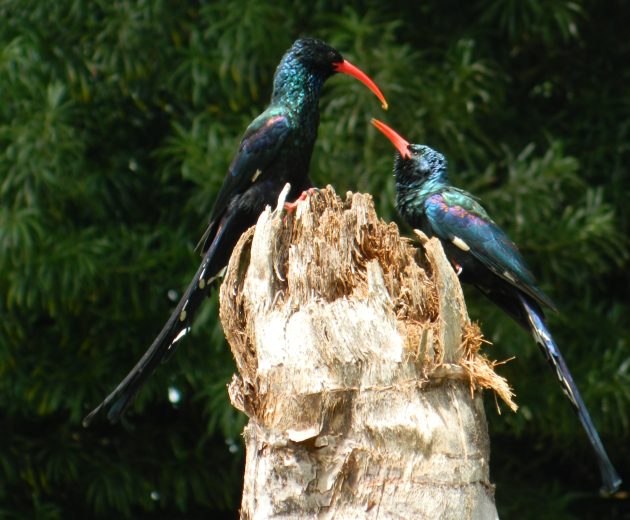
Collared Sunbird
A species that I always loved to see along the eastern lowlands of the country, this cute sunbird is very colourful and has an adorably compact shape. It is a quite common species and often visits aloe flowers, one of my favourite groups of plants in the world. As it is comparatively short-billed, it spends more time gleaning insects from foliage than other sunbird species that are more specifically nectarivorous (like the Southern Double-collared Sunbird in this post’s featured image). I often spent some time watching them in Letaba camp in Kruger National Park, as they were used to the people here and thus allowed a close approach to look at its shiny scale-like plumage.
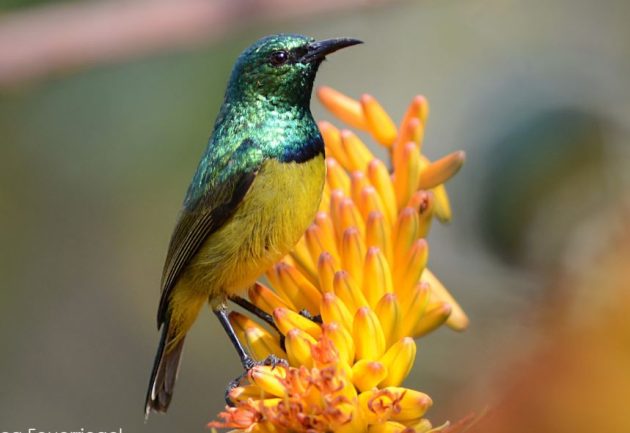
Rufous-necked Wryneck
While I’d prefer to stick to the old name “Red-throated Wryneck” which I still have in all of my old guides, I decided to stick with the name on eBird to be consistent with the rest of this list. This is the other species in this list that I’ve never seen and indeed one of the reasons I’ve included it here is that the wryneck is probably one of my biggest bogey birds (a.k.a. nemesis bird) in South Africa. I’ve been to many places – from Suikerbosrand Nature Reserve to Wakkerstroom – that are supposedly excellent for this species, but it has always gotten away. It is also a typical highveld bird so I thought it’s nice to include a species of this habitat given that it covers much of the country.
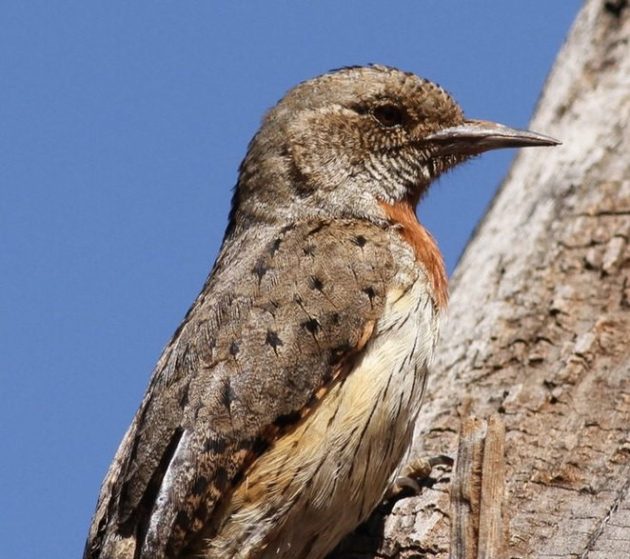
Southern Ground-Hornbill
This is probably one of the most charismatic-looking birds in the country. This is a species of open bushveld and savanna, requiring mature trees for breeding and therefore being unfortunately rather endangered. I did not come across them regularly, but the sightings are usually quite good as they are not shy when they forage on the ground in the small family groups. Their size and appearance makes them absolutely stunning birds.
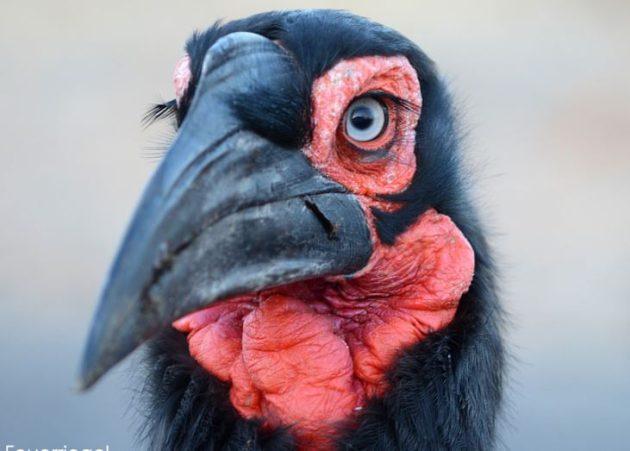
Knysna Turaco
I still have the moment burned into my mind of a Knysna Turaco flying above us river while I was canoeing on a river with my family along the Garden Route. This was before I was a dedicated birder (although I already liked birds), but the bright red wings were just an irresistably beautiful contrast to the green forest. They are not difficult to see, but it is quite uncommon to get clear views of this species as they tend to be rather shy. I managed to get a flight photograph of this bird only once, in the legendary Magoebaskloof forest in northeastern South Africa.
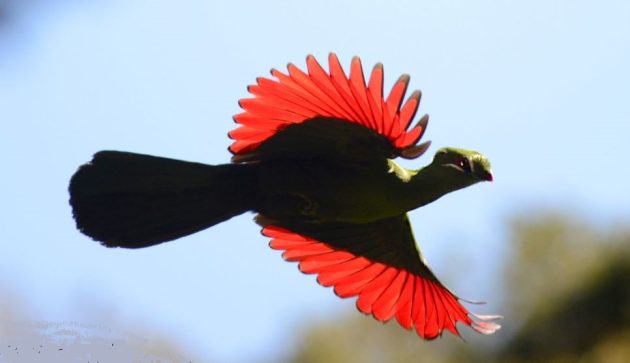
I’ve gone right up memory lane with this post by reminiscing on my past sightings and desired sightings. So perhaps I will follow up with a further post on my favourite birds of another country of the southern African subregion, since I generally looked at the subregion as a whole rather than the countries individually in terms of birding (largely because my bird guide and checklist are for the subregion rather than only South Africa).






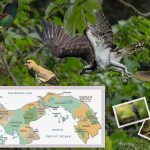
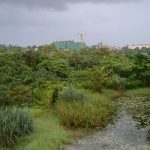

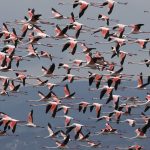

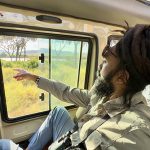
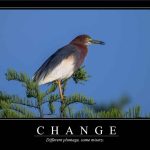
I am glad to see that I have already seen about half of these species … and glad to know there is a good reason to go back to South Africa to see the other half! But no kingfisher, and no Spotted Eagle Owl? Luca, you have some explaining to do!
Coming soon: Luca’s 800 fav species in South Africa! Well chosen selection. Leaving me room for top 10 little brown jobs…
I’ve been lucky enough to have seen all the birds in Luca’s Top 10, though my finfoots have been in Zimbabwe, Kenya and Uganda, but not South Africa. Pel’s fishing owl is a stunner. I saw my first in Mkuze, where I had great views of a very damp bird that had clearly just been fishing. It was long before the days of digital photography, or even digiscoping, but the image of the bird is burnt into my memory. South African is a wonderfully bird-rich country.
My rufous-necked wryneck was in Kenya, where I suspect they are easier to see than in South Africa. I’ve never managed to see a European wryneck in Africa. The two species are quite similar, and both are fascinating birds.
The wryneck is very accessible in Wakkerstroom with the local guides (South Africa)
Indeed! Unfortunately I didn’t have a guide when I was there (major mistake also considering Rudd’s and Botha’s Larks…)
Hahaha yeahh there is so much more! I was also thinking of some larks that I would’ve liked to add
Yeahh I mean Woodland Kingfisher would’ve been a nice choice. My main regrets are not including Gorgeous Bush-shrike, maybe a grassland species like Quailfinch or Long-tailed Widowbird, and a Cape endemic like Cape Sugarbird. But removing any of the others would’ve been too painful 🙂
Just repeat this post 70 times…